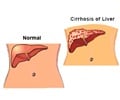- Alcoholism Addiction Treatment - (http://americanaddictioncenters.org/alcoholism-treatment/)
- Alcohol Use Disorder - (https://www.niaaa.nih.gov/alcohol-health/overview-alcohol-consumption/alcohol-use-disorders)
- Alcoholism and Alcohol Abuse - (https://medlineplus.gov/alcoholismandalcoholabuse.html)
- About Alcoholism - (http://www.alcoholics-anonymous.org.uk/About-AA/Newcomers/About-Alcoholism)
- Alcohol Abuse - (https://www.helpguide.org/articles/addictions/alcoholism-and-alcohol-abuse.htm)
Alcoholism is a Disease
Alcohol use disorder or alcoholism refers to an uncontrolled intake of alcohol. It’s a disease, just as similar to any other medical condition.
Now a days, at the end of a college session or work day, several young adults take on to liquor to relax, relieve office stress, celebrate project success or cope with a break-up. Several bars run happy hours, offering exciting deal on alcoholic drinks. For some, one drink a day is enough to just get a hang of it. But for some others, it is only the beginning of a long session of drinking, till they lose awareness not realizing where and when to stop. It might start with a drink once a month, then go on to once a week and without realizing, becomes a daily affair. This is when we can say that the person is suffering from alcohol use disorder or alcoholism.
People don’t intend to start drinking. They might not enjoy the taste and effects of alcohol during their first or second round. But eventually, they end up drinking owing to the peer pressure. For some people, alcohol is all about mental relaxation and relief from all anxieties. Parents with bad drinking behaviors may contribute to their kids’ alcoholic use disorder. Kids who have been watching their parents drinking and fighting may go into depressive episodes and turn to drinking as a coping mechanism to deal with anxiety. A genetic basis may also be responsible for passing alcoholism from the parents to the children.
Drinking alcohol has some immediate physical effects like mood changes, complete loss of coordination and slurring of speech. These temporary effects wear off in couple of hours. Extreme overdose of alcohol can be fatal.
Some people with alcohol use disorder might perform well at work, have a happy family life and might not drink around the clock but when they drink, they don’t know how and when to stop. Such people are called high-functioning alcoholics.
A Standard Drink and Low Risk Drinking
The definition of a standard drink varies among countries. In the United States, a standard drink is defined as a drink that contains 14 gm of alcohol. It is equivalent to 12 ounces of 5% ABV (alcohol by volume) beer, 5 ounces of 12% ABV wine and 1.5 ounces of 40% ABV distilled spirits or liquor. In India, a standard drink usually refers to 10 gm of absolute alcohol. It is important to understand the concept of a standard drink, since the volume of drink in the glass or can does not match up to the amount of alcohol consumed.
The following are some of the guidelines that have been laid out for low risk drinking among Indians:
Regular Beer – A regular beer contains 5% alcohol, whereas light beers have 4.2% alcohol. For individuals who drink regular beer once or twice a week, it should not exceed 1.5 bottles for men and one bottle for women. For any single occasion, it should not exceed 2.25 bottles for men and 1.5 bottles for women.
Hard liquors (whiskey, rum, vodka, tequila) – Hard liquors contain 40% alcohol w/v. A standard Indian peg or shot is either small measuring 30 ml or large measuring 60 ml.An individual drinking once or twice a week should not consume more than 4 small pegs or 2 large pegs in case of males, and 3 small pegs or 1 large peg in case of females. For any single occasion, the consumption should not be more than 6 small or 4 large pegs for men and 4 small or 2 large pegs for women.
Wine – A standard Indian wine glass measures in four sizes, small (125 ml), standard (150 ml), large (250 ml) and a large bottle size measuring 750 ml. Individuals drinking once or twice a week should not consume more than 2.5 standard glasses in case of men and 1.5 standard glasses in case of women. For any single occasion, the consumption should not exceed 3.5 standard glasses or half a bottle for men and 2.5 standard glasses or one third a bottle for women.
What are the Types of Alcoholic Individuals?
People affected with alcohol use disorder can be classified into several types:
- Young adult subtype – This includes young adults with no family history of alcoholism or any co-occurring mental illnesses.
- Young antisocial subtype - This includes young adult drinkers with a family history of alcoholism, and co-occurring mental illnesses and addictions to other substances.
- Functional subtype – This includes middle-aged adults with a stable financial status and family but with a family history of alcoholism. They sometimes suffer from depression.
- Intermediate familial subtype - This includes middle-aged adults with a family history of alcoholism and personal history of a prior depressive episode.
- Chronic severe subtype – This includes middle-aged adults with a family history of alcoholism, and the presence of mental illness and substance abuse other than alcohol.
What are the Signs of Alcohol Abuse?
Alcohol intake is so common nowadays in young adults that it’s very important to understand the signs to identify if the person is an alcoholic or not. There is one pattern of drinking very common in adults called binge drinking. Binge drinking involves consumption of alcohol with the intention of getting drunk. This means an intake of five or more standard drinks for men and four or more standard drinks for women in about two to three hours. People with such drinking patterns lose control over their consumption.. Alcohol consumption starts driving an individual’s behavior, and if not amended on time, can lead to alcohol abuse . The use of alcohol gradually moves from troublesome to compulsive to addiction. Following are some of the changes that could indicate that the person is having a problem:
- Drinking in the morning
- Drinking alone
- Drinking whenever free as a pass time
- Switching from beer to wine with an intention that it limits consumption
- Feeling guilty after drinking
- Hiding drinking
- Overwhelming desire to drink with an inability to control the drinking, which increases with time
- Blackouts
- Bulk buying of alcohol with a concern of not getting when required
- Impaired judgment and coordination post drinking
- Aggressive outbursts
- Giving up other recreational activities for drinking
- Fighting with family, friends if they resist drinking
- Withdrawal symptoms if the person stops drinking
- A continual to drink despite evidences of its harmful consequences
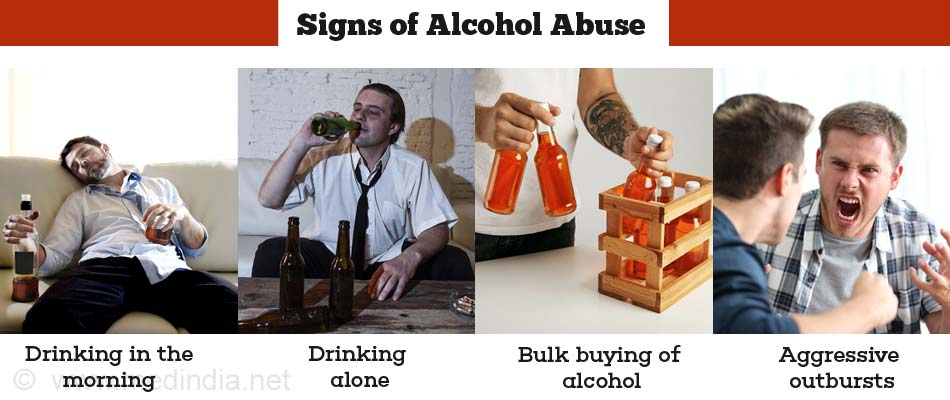
What are the Immediate and Long-term Effects of too much Drinking?
Immediate Consequences of Heavy Drinking
As soon as a person sips alcohol, it enters the bloodstream and starts affecting the nervous system. The effects start, as early as within 10 minutes of drinking and as the alcohol concentration in the blood increases, the effects start getting stronger and more evident. These effects include:
- Reduced inhibitions
- Slurred speech
- Confusion
- Temporary loss of memory
- Temporary loss of ability to concentrate
- Temporary motor impairment
- Difficulty breathing
- Death if taken in extreme quantities
The above effects can further lead to violent behavior, suicide and homicide and also can lead to accidents, if the person drives in a drunken state.
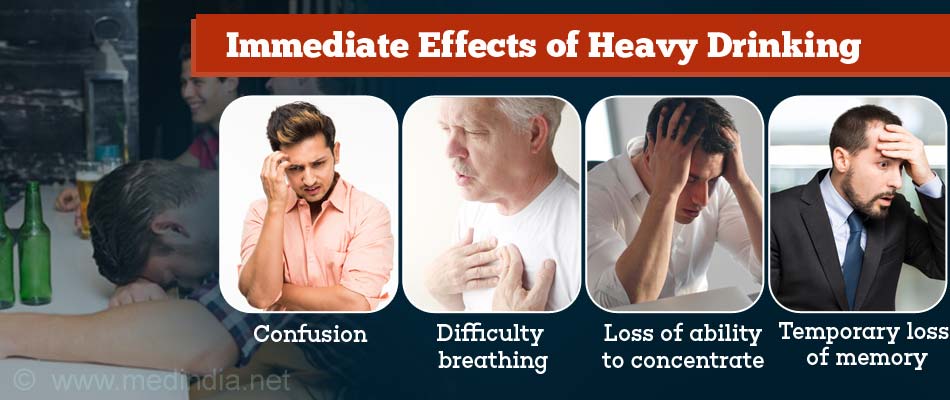
Long Term Effects of Alcohol on the Body
The long-term effects of alcohol vary from person to person depending on their consumption behavior, body type, and age and health status. Continuous drinking over the years can cause a silent but very deep irreversible impact on body:
- Brain – Coordination problems, tremors
- Heart – Cardiomyopathy, arrhythmias, stroke, high blood pressure
- Liver – Fatty liver, alcoholic hepatitis, fibrosis, cirrhosis
- Pancreas – Pancreatitis
- Cancers of mouth, esophagus, throat, liver, breast
- Weakening of immune system resulting in chances of developing diseases like pneumonia and tuberculosis
- Depression
- Impotence in men
- Fetal damage when consumed by pregnant women
- Wernicke-Korsakoff syndrome – This is a brain disorder caused due to the deficiency of thiamine (vitamin B1), which is very common in people with alcohol use disorder.
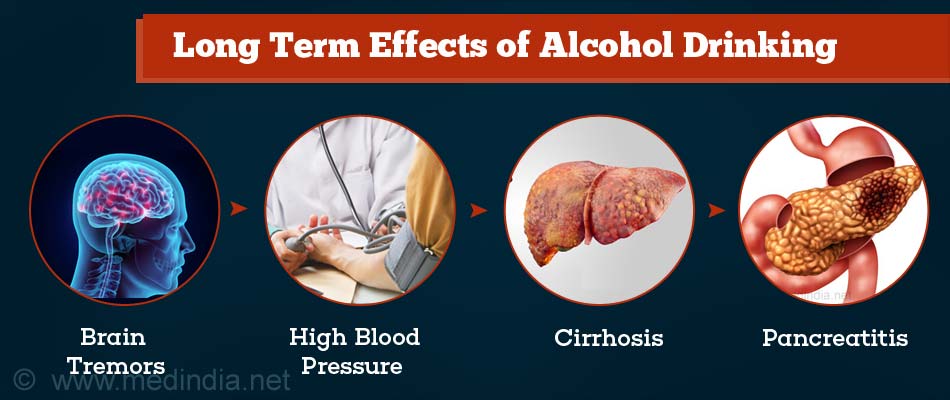
What Tests are Recommended in Alcoholic Patients?
They are certain biomarkers which act as physiologic indicators of alcohol use disorder. These biomarkers are:
- Aspartate aminotransferase (AST)
- Alanine aminotransferase (ALT)
- Gamma glutamyltransferase (GGT)
- Mean corpuscular volume (MCV)
- Carbohydrate-deficient transferrin (CDT)
How is Alcoholism or Alcohol Use Disorder Treated?
- Treatment starts with taking a detailed history of the person including his/her drinking, eating and behavioral habits. If the patient has history of delirium tremens, hospitalization is required.
- Right from the beginning of treatment, patients should stop taking alcohol completely.
- Psychiatric evaluation is very important to understand, if the patient is suffering from depression, anxiety disorder, or other related disorders, which should be treated.
- The most common medications recommended for the treatment of alcohol withdrawal are:
- Supplemental thiamine
- Folate (a vitamin) and magnesium
- Benzodiazepines such as lorazepam, diazepam and chlordiazepoxide.
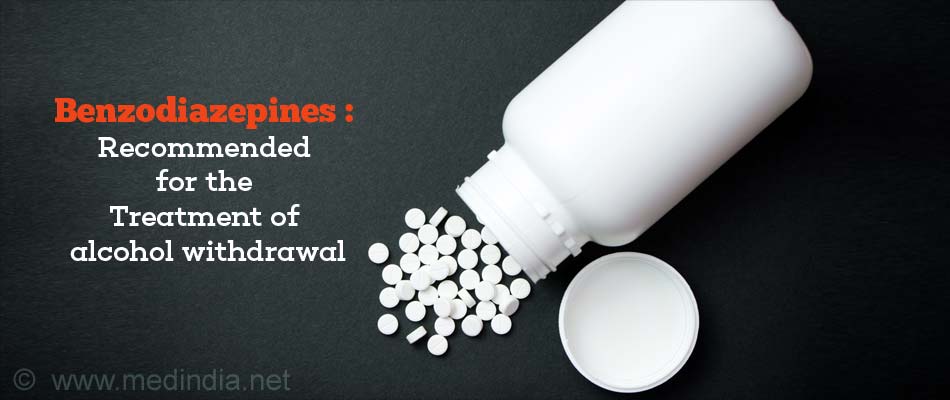
Rehabilitation is achieved through short-term or long-term programs. A recovery support system is built for the patient which includes counselors and psychologists who adopt various therapies to help the patient fight his/her unending urge to drink and gain control over his/her will power. Twelve-Step Facilitation Therapy, Motivational Enhancement Therapy, and Cognitive-Behavioral Coping Skills are just to name a few. Medications like disulfiram, naltrexone or acamprosate are administered to prevent drinking.
Below are some questions that you could ask yourself to check if you could be suffering from alcohol use disorder:
Self-Check Questionnaire to know If you are Suffering from Alcohol Use Disorder
- Have you even been through times when you ended up drinking more than you intended?
- Did you ever want to or tried to stop drinking but couldn’t?
- Do you experience severe craving for alcohol?
- Do you feel that drinking can help you relieve your professional or personal stress?
- Do you continue drinking despite consistent fights in your family over your drinking, because you just can’t get enough of it?
- Do you always find time to drink no matter how busy you are, because you feel that it will help you give your ultimate space?
- Have you given up activities that were very important and more pleasurable than drinking in favor of drinking?
- Do you repeatedly get into situations where after drinking, you got into dangerous unmanageable situations with chances of getting hurt such as driving, swimming or having unsafe sex?
- Do you continue drinking even though it adds to your health problems?
- Did you continue drinking despite a memory blackout?
- Do you keep on drinking to enjoy the effect of intoxication?













